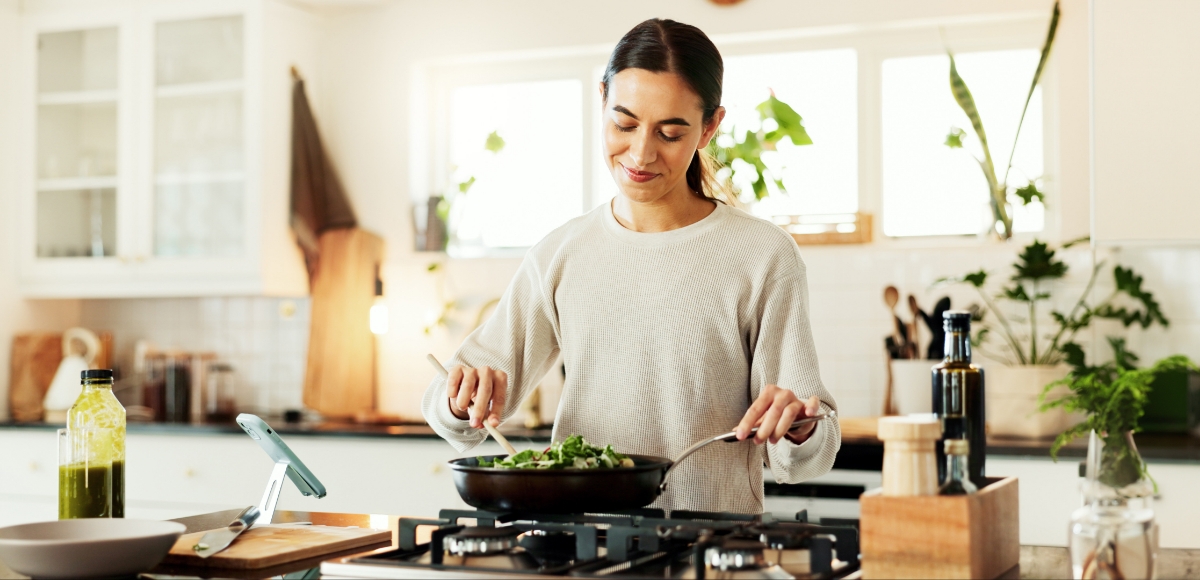guest post from susan macfarlane, registered dietitian nutritionist
If you’ve ever tried to lose weight in the past, it’s likely you’ve heard the old adage of “eat less and move more” from well-meaning friends, family members, and even healthcare professionals.
Although it seems like a logical approach to losing weight, this sentiment doesn’t capture the subtle complexities that influence weight. Our individual biology, environment, and psychology all play a role in how our bodies lose and gain weight.
Becoming aware of your eating and exercise habits, and the factors within your environment that support or sabotage your weight loss attempts, is crucial for long-term, healthy weight loss.
Below you will find a summary of the six key tips I use in my nutrition practice to help clients meet their weight loss goals.
Start Tracking Your Lifestyle
Before you change what you eat, you need to know why you eat. Specifically, you need to identify the people, situations, time of day, foods, and emotions that make you want to eat. Similarly, it’s important to note the factors that motivate you to exercise vs. get in the way of your fitness goals. Cronometer allows you to gather these details in real time. Track biometrics or use the ‘Add Note’ feature to do this.
For example, one of my clients added a note when a poor night’s sleep caused her to skip breakfast.
Log As You Eat
Try to recall what you ate for lunch two days ago. Can you also remember how much of each item you ate, as well as the sauces and oils that were added? How’d you do? ?
If you’re like most people, you have no idea what you ate for lunch two days ago, let alone the amount you consumed. But when it comes to weight loss, these details matter. As much as possible, I encourage my clients to log their food as they eat. This is easiest for those working at a desk where they can keep the Cronometer tab open.
I also suggest using Reminders in the app to prompt you to complete your entry. And if you can’t log right away, snap a photo of your meal then log it when you can.
Carefully Measure Calorie Dense Foods
I don’t believe that every morsel of food should be weighed or measured. However, there are a few calorie-dense items (even healthy ones) that we should measure before we eat them, given how easy they are to over-consume. The following list is a quick summary of the foods I ask clients to weigh or measure until they feel comfortable eye-balling a portion. (Note that I am not arguing over the healthfulness of the following items, only the calorie density.)
- All fats (butter, margarine, oil, etc.).
- Nuts, seeds, and nut butters
- Alcohol and sugar-sweetened beverages
- Indulgences, (chips, chocolate, ice cream, etc.)
- Pasta, rice, breakfast cereal
- Meats
- Cheese
- Sauces and salad dressings
The two food groups that I don’t worry about measuring are fruit and vegetables since these foods are naturally low in calories; under and overestimating them will have little impact on total daily calorie intake.
Overestimate Restaurant Meals
Cronometer boasts an impressive database of restaurant meals and foods, making it easy to record meals eaten away from home. However, keep in mind that nutrition information determined by restaurants is not always accurate. In general, the more complex an item, the greater the nutrition discrepancy may be. In addition, there is a big (calorie) difference between eating a sandwich that you made from home and a sandwich you ordered in a restaurant.
I suggest overestimating your portion at fast-food restaurants by 10-20% and at sit-down and family style restaurants by 30-40%. At the end of the week, it’s better to overestimate how much you ate and see a weight loss versus underestimate and see no change or a gain in weight without knowing why.
Use Custom Recipes
Entering your entire recipe can be a pain, especially when Cronometer includes the calorie and nutrient information for a dish that looks similar to what you made. However, there can be significant calorie and nutrient variation between your recipe and those included in Cronometer’s database, which can influence your weight loss outcome.
My advice is to think about the recipes you cooked over the previous two weeks, entering those you made often as a “Custom Recipe” in Cronometer. It’s also a good idea to set some time aside each week (for example, when you are menu planning or meal prepping) to enter any new recipes into your Cronometer recipe account.
By upgrading to the Gold subscription of Cronometer, you can do this easily by copy and pasting a URL from the recipe website with the Recipe Importer.
Treat Cronometer As A Meal Planning App
When it comes to sustainable weight loss, planning and organization are your best assets. People tend to struggle the most with their food choices when they are hungry and have no plan for what they are going to eat. In this situation, we usually opt for the easiest (but not necessarily the healthiest) option.
Because Cronometer allows you to track your meals before you eat them, you can use your food diary to create custom meal plans for you and your family. I advise my clients to block off some time during the weekend (before grocery shopping) to plan a week’s worth of meals and snacks. Any new recipes that will be used during the upcoming week can also be added. Meal planning makes tracking during the week easy since the food is already entered. In addition, you can drag and drop meals and snacks into upcoming weeks to create a reusable and dynamic meal plan.
If you have other tried and trued tips for weight loss tracking, I’d love to hear about them. Feel free to head over to the forum to share your tips!




